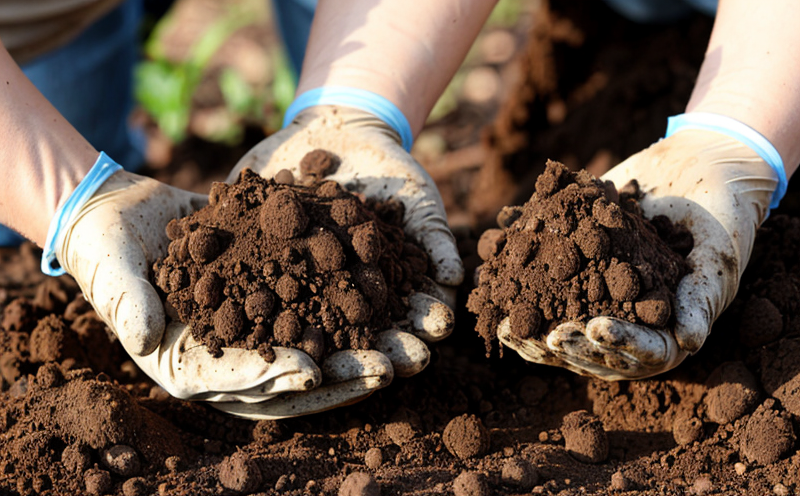EN 16197 Soil Methane Oxidation Testing
The EN 16197 standard is a pivotal method used to assess soil methane oxidation capacity. This testing procedure quantifies the ability of soil microorganisms to degrade methane, an important greenhouse gas. Methane oxidation plays a critical role in reducing atmospheric methane levels and mitigating climate change impacts.
Methane emissions from soil can vary widely depending on the type of soil (e.g., peatlands, agricultural soils), management practices (e.g., irrigation, fertilization), and environmental conditions. Soil methane oxidation testing is essential for understanding these dynamics and ensuring that mitigation strategies are effective.
The EN 16197 protocol involves measuring methane consumption rates in soil incubation chambers under controlled conditions. This process allows researchers to assess the efficiency of methanotrophic bacteria, which break down methane into carbon dioxide and water. The results provide insights into how different soil types and management practices influence methane cycling within ecosystems.
Understanding soil methane oxidation is crucial for several sectors including agriculture, environmental science, and waste management. In agriculture, optimizing methane oxidation can lead to more sustainable farming practices by reducing greenhouse gas emissions without compromising productivity. Environmental scientists rely on this testing to monitor changes in soil health over time due to anthropogenic or natural disturbances.
Waste management professionals use EN 16197 results to evaluate the potential for landfill biogas recovery and methane reduction strategies. By identifying soils with high methane oxidation rates, they can design better waste treatment facilities that minimize environmental harm while maximizing resource recovery.
The testing process typically involves collecting soil samples from various depths and locations within a field or site of interest. These samples are then prepared according to EN 16197 specifications before being placed into incubation chambers where methane is introduced at controlled concentrations. Over time, the amount of methane consumed by the microorganisms in the sample is measured using gas chromatography techniques.
Results from this testing can be used to inform decisions about soil amendments that enhance methanotrophy or implement strategies aimed at reducing agricultural methane emissions. For instance, adding certain types of organic matter known as biochar has been shown to improve methane oxidation in some soils while other practices like cover cropping have demonstrated benefits for others.
| Sample Preparation | Incubation Conditions | Data Collection |
|---|---|---|
| - Collect soil samples from targeted depths and locations. - Homogenize the collected material to ensure consistency. |
- Incubate at 20°C ± 2°C for up to seven days. - Maintain a relative humidity of 75% ± 10% throughout incubation. |
- Measure methane concentrations using gas chromatography. - Record consumption rates over specified time intervals. |
Scope and Methodology
The scope of EN 16197 encompasses the determination of soil methane oxidation potential under controlled laboratory conditions. This includes measuring the rate at which methanotrophs in soil reduce atmospheric methane concentrations.
- Methane consumption rates are calculated based on initial and final methane levels measured over a defined period.
- The method specifies incubation temperatures, humidity levels, and time frames appropriate for different soil types and climatic zones.
- Results obtained from this testing can be used to evaluate the effectiveness of various management practices aimed at enhancing methanotrophy.
Quality and Reliability Assurance
To ensure accurate measurements, several quality control measures are implemented during EN 16197 testing. These include:
- Calibration of Instruments: Gas chromatographs used for methane concentration analysis must be regularly calibrated according to manufacturer guidelines.
- Replication: Multiple replicates are conducted to account for variability inherent in soil samples and incubation processes.
- Data Validation: All data points are validated against established benchmarks before final reports are generated.
Use Cases and Application Examples
This testing is particularly valuable for several applications:
| Application | Description |
|---|---|
| Agricultural Sustainability | Evaluating the impact of different cropping systems on methane emissions. |
| Waste Management | Determining optimal conditions for biogas production in landfills. |
| Ecosystem Health Monitoring | Assessing changes in soil microbial communities due to climate change or human activities. |
| Methane Mitigation Strategies | Testing new amendments like biochar that could enhance methane oxidation rates. |





